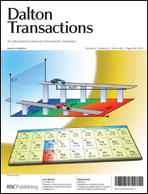Comparative density functional study of the complexes [UO2(CO3)3]4− and [(UO2)3(CO3)6]6− in aqueous solution
Abstract
With a relativistic all-electron density functional method, we studied two anionic uranium(VI) carbonate complexes that are important for
![Graphical abstract: Comparative density functional study of the complexes [UO2(CO3)3]4− and [(UO2)3(CO3)6]6− in aqueous solution](/en/Image/Get?imageInfo.ImageType=GA&imageInfo.ImageIdentifier.ManuscriptID=C002788J&imageInfo.ImageIdentifier.Year=2010)

 Please wait while we load your content...
Please wait while we load your content...